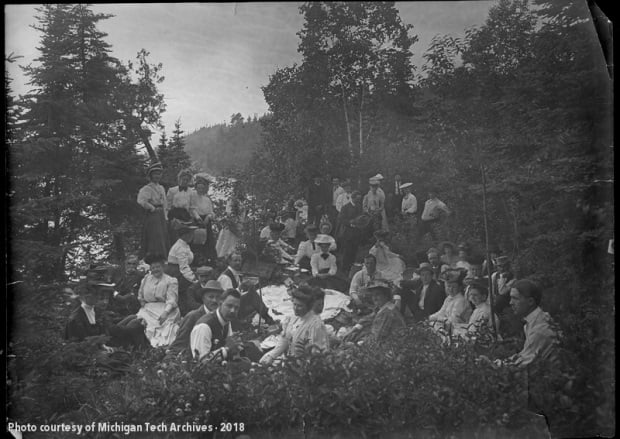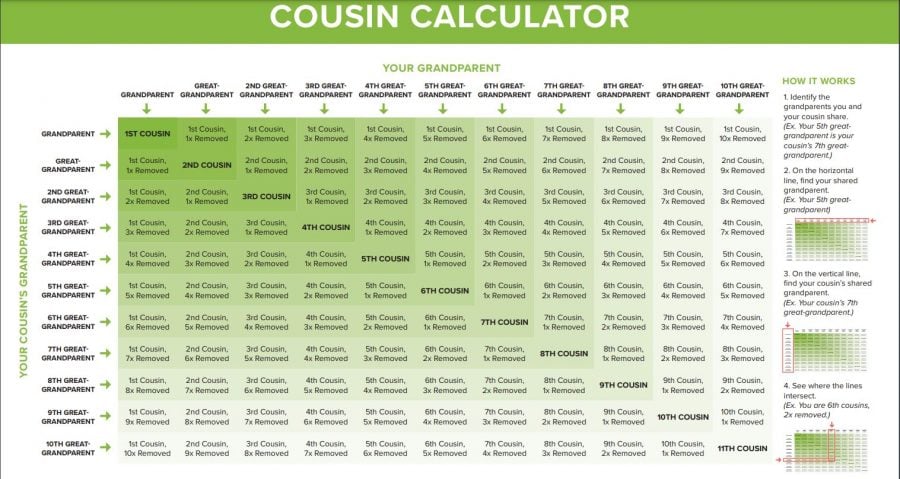
Image MS019-19-01-01 from the Brockway Photograph Collection (MS-019) via Copper Country Historical Images.
Genealogy is one of America’s most popular and most accessible hobbies, but sometimes the terms associated with it boggle the mind. Our archivists are here to help make the jargon of history make sense whenever we can. We’ll use this opportunity–hopefully the first in an occasional blog series!–to shed some light on one such term. When someone says that so-and-so is his first cousin once removed, what the heck is that?
When many of us use the term “cousin” in casual conversation, we’re thinking of the children of our aunts and uncles. These are our first cousins. Where does that term come from? Think about the ancestors you share with your first cousins. You do not share a parent, or you would be siblings or half-siblings. You share grandparents. When genealogy classifies cousins, it thinks about the number of generations you have to go back from your own parents to find the first case of shared ancestry. Grandparents are one generation, so your aunts’ and uncles’ children are your first cousins. If you and a relative find that your closest shared ancestors are, for both of you, your great-grandparents, then the two of you are second cousins. If both of you have to go back to your great-great-grandparents, you’re third cousins.
See how the pattern works? An easy way to remember and to calculate is to just count the number of times “great” appears in your ancestor’s relationship, then add one for the generation of your grandparents.
This establishes our baseline: now we can calculate the connection between us and a relative if our shared ancestor is an “equal” one–that is, if he is the great-grandfather, for example, of both of us. What happens when the shared ancestor is one person’s great-great-grandfather and the other person’s grandfather? This is where “removed” comes in.
Saying “removed” provides a shorthand for explaining that you and your cousin belong to different generations within your family tree. Let’s say that Alice’s grandfather is Bob’s great-grandfather. In other words, Bob is the child of Alice’s first cousin. This makes Bob and Alice first cousins once removed. Why? The person whose connection with the first shared ancestor is the closest determines what kind of cousin relationship the two share, so Alice’s connection takes precedence. There’s one generation between them, since their closest shared ancestor is Alice’s grandfather but Bob’s great-grandfather. That is what we mean by once removed. If Bob has a son, Charlie, he will be two generations removed from Alice. Charlie’s birth doesn’t change how closely Alice is linked to their shared ancestor, however, so Alice and Charlie are still first cousins, twice removed.
We can build on these two basics to figure out our relationships with anyone in our family tree!
- Joseph’s great-great-great-grandfather is Mary’s grandfather. Joseph and Mary are first cousins three times removed.
- Rachel’s great-great-grandfather is Leah’s great-grandfather. Rachel and Leah are second cousins once removed.
- David’s great-great-grandfather is Jonathan’s great-great-grandfather, and the two aren’t siblings. David and Jonathan are third cousins.
If you’re a visual learner, plenty of genealogical organizations have constructed helpful charts that can clarify the process. Even experienced family historians keep these diagrams close at hand to check their work! The example below from FamilySearch is one of the best charts out there, and their website also offers a handy calculator (simply click the link and scroll down) if you’d like someone else to “crunch the numbers.”

The process might seem a little challenging at first, but you’ll quickly gain skill and confidence as you practice with your own family tree. Soon, you’ll be calculating relationships like an old pro!